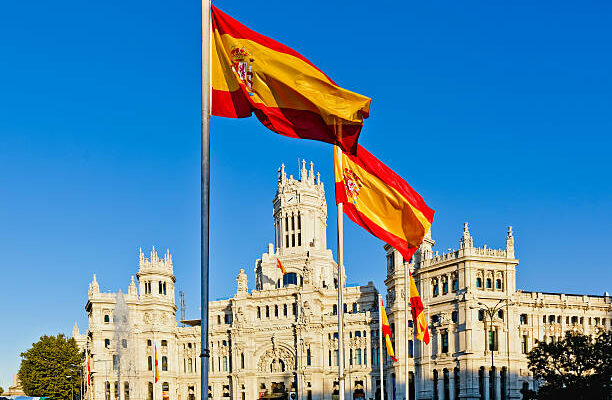Spain, a country rich in history, culture, and natural beauty, is a destination that captivates the hearts of millions of visitors each year. From the vibrant cities to the serene countryside, Spain offers a diverse range of experiences that cater to every traveler’s dream. Whether you’re a history buff, a food lover, or an adventure seeker, Spain has something special waiting for you.
The Iconic Alhambra
Perched on a hill overlooking Granada, the Alhambra is one of Spain’s most iconic and enchanting historical sites. This UNESCO World Heritage site is a testament to the sophistication and elegance of Islamic architecture and a symbol of the rich cultural exchange that occurred during Spain’s Islamic period. The Alhambra’s origins date back to the 9th century when it was initially constructed as a modest fortress. However, it was during the 13th century, under the Nasrid Dynasty, that the Alhambra was transformed into a grand palace complex.
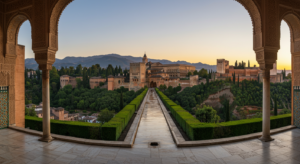
Pro Tip: Due to high demand, book tickets in advance online to ensure entry. The best times to visit are spring and autumn, offering pleasant weather and fewer crowds.
The Seville Cathedral
The Seville Cathedral, located in the heart of Seville, is the largest Gothic church in the world and a UNESCO World Heritage site. Completed in the early 16th century, this Roman Catholic Cathedral is breathtaking with its beautiful artwork, countless chapels, sculptures, and religious artifacts.
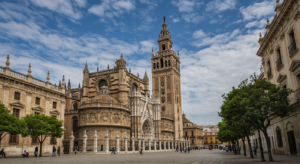
Pro Tip: As it is one of Seville’s most popular tourist attractions, it’s best to book your tickets online in advance to avoid the long queues.
The Royal Palace of Madrid
The Royal Palace of Madrid, also known as the Palacio de Oriente, is the largest royal palace in Western Europe and one of the largest in the world. Built in the 18th century to replace a former Moorish Castle, it was home for the Spanish royal family but today is only used for state ceremonies.
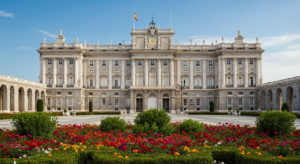
Pro Tip: The visit includes entrance to the official halls, the Royal Armory, and the Royal Pharmacy. It’s a great starting point for exploring Madrid.
Santiago de Compostela Cathedral
Santiago de Compostela, located in the northwestern region of Galicia, is a historic city dominated by its towering cathedral. This UNESCO World Heritage site marks the end point for people who participate in the Camino de Compostela, a series of ancient pilgrim paths across Spain and Europe.
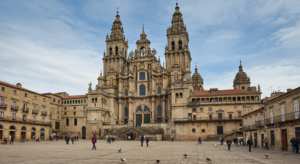
Pro Tip: You can enter the cathedral for free, and mass takes place four times each day, attended by many tourists. Don’t miss the traditional swinging of incense, known as the ‘Botafumeiro’.
La Sagrada Familia
One of the most iconic historical places in all of Spain is La Sagrada Familia, located in Barcelona. This UNESCO World Heritage site has been under construction for 140 years and is expected to be finally finished in the next ten years or so. Created by the famous Spanish architect Antoni Gaudi, it features a unique Spanish Gothic style.
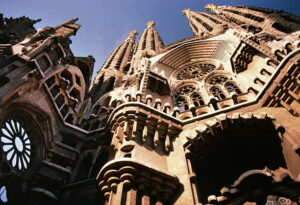
Pro Tip: With this being such a popular tourist site, it is worth buying your tickets in advance online rather than turning up on the day.
The City of Arts and Sciences in Valencia
The City of Arts and Sciences in Valencia is a complex with unique design and architecture dedicated to scientific and cultural dissemination. Inaugurated in 1998 and designed by the well-known architect Santiago Calatrava, it is Valencia’s most important modern tourist destination.
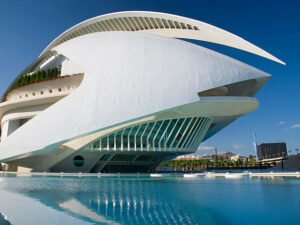
Pro Tip: A visit to this place will exceed all your expectations. It’s a great place to spend a few hours exploring the various buildings and exhibitions.
The Guggenheim Museum in Bilbao
The Guggenheim Museum in Bilbao is one of Spain’s most famous museums and a pride of the city. Inaugurated in 1997, this museum of contemporary art is a historical landmark that exemplifies the grand artistry of the Spaniards.

Pro Tip: The museum is a masterpiece of Frank Gehry and an architectural wonder. Buy tickets in advance and visit on a day with nice weather conditions to fully appreciate the exterior.
The Roman Theatre of Merida
The Roman Theatre of Merida is a Spanish Cultural Heritage and a UNESCO World Heritage Site. Built around 16 to 15 BCE, it is one of the most iconic Spanish landmarks still in existence.
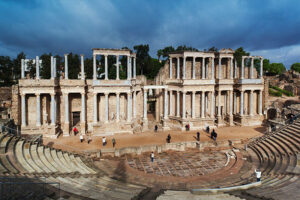
Pro Tip: The theatre is home to the festival of the Classical Theatre of Merida. Visit during the festival for a unique cultural experience.
The Aqueduct of Segovia
The Aqueduct of Segovia is a remarkable engineering marvel, representing Roman rule in Spain. This well-preserved World Heritage Site is worth exploring for its historical significance and architectural beauty.
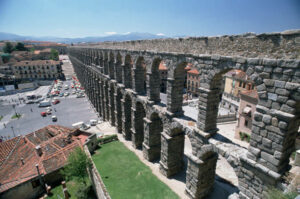
Pro Tip: Stroll through the enchanting Plaza Mayor or soar high above the city on a hot air balloon ride for a unique perspective.
The Alcazaba in Málaga
The Alcazaba of Málaga is one of Spain’s most important preserved fortresses and defensive enclosures. It fulfilled military and government functions in the city in the medieval period.
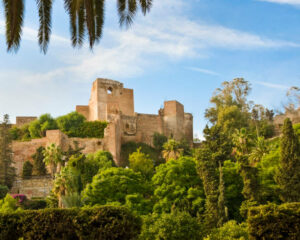
Pro Tip: The fortress is located in front of the sea, offering stunning views of the Mediterranean. Explore the various towers and defensive walls for a glimpse into medieval life.
Conclusion
Spain is a country that wears its heart on its sleeve, offering a blend of history, culture, and natural beauty that is hard to resist. Whether you’re strolling through the historic streets of Seville, marveling at the Alhambra in Granada, or enjoying the modern marvels of the Guggenheim Museum in Bilbao, Spain promises an unforgettable experience. Pack your bags and embark on a journey to discover the magic of Spain for yourself.
